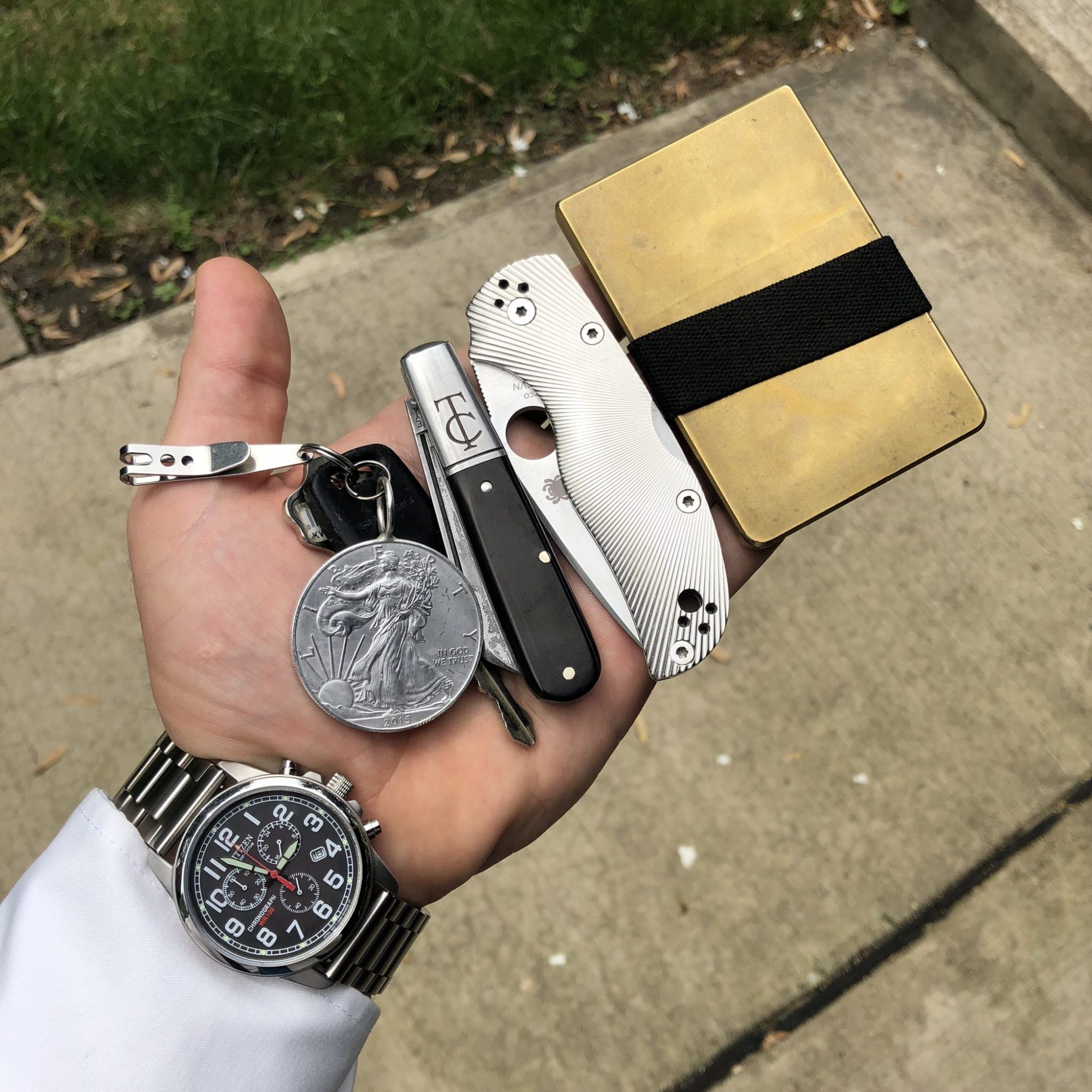One of the most engaging aspects of traditional slipjoint knives is the myriad of unique patterns that have been made, and a great example can be found in the Cotton Sampler. The Cotton Sampler is a relatively little known and sparsely made pattern that has, like many traditional patterns, an obscure history. In this article I’ll discuss some of the pattern’s variations, possible background, and current versions.
Description
There are two distinct blade shapes and corresponding handle shapes that have been given the name “Cotton Sampler”. One type of Cotton Sampler has a backward curved handle, like a swayback, (though some versions have a straight frame) and a hefty straight edged blade with a straight spine and abrupt angle toward the tip. This type looks very similar to a typical harvester or sailor knife, but often with an even taller blade. The other, more unique, type has a forward curved handle and a blade that deserves its own sentence to describe. The blade on this type has a long unground ricasso, often around an inch long, between the kick and the edge itself, which curves abruptly toward a small clipped tip. It makes for a blade that looks like a squatter spay shape with an unground extension from the handle. While both these shapes have been called Cotton Samplers, today the term is almost exclusively used for the latter style.

History
So, what’s the story behind these interesting knives? Well, it seems the pattern shapes themselves likely predate the name. The first style described above is just a slight variation of an ancient pattern that can be found in the earliest Sheffield pattern books (and likely much earlier, as some Roman knives have similar designs). It’s a classic agriculture pattern well suited for the pull cuts prevalent in those uses. On the other hand, the second style is less typical. The earliest example with this unusual blade shape can be found in a 1903 Schatt & Morgan catalogue, but isn’t identified as a Cotton Sampler. It actually has a rounded unground area, rather than the flat type seen on later examples, that is heavily reminiscent to finger choils on modern knives (at least to my eyes). Considering that a knife of the same shape in a 1938 Maher & Grosh catalogue is identified as a “Skinning Knife”, I think it is likely that this version of the Cotton Sampler pattern started as a sportsman’s knife and was later repurposed for agricultural use. That said, I have seen an explanation of the unusual blade shape proposed in several places. Apparently the tall blade with abrupt edge is used to cut into a bale of cotton and act like a spoon to extract a sample (hence the name), and the flat unground area is used to rub the cotton fibers to somehow ascertain the quality of the product. While it’s not my place or intention to claim what is or isn’t fact in this notoriously murky realm of knife history, I find it likely that the previously described use evolved to fit an already existing pattern and then that use influenced the evolution of the pattern itself.

Availability
Unfortunately, the Cotton Sampler is not one of the more widely available patterns. Queen made both versions over the years before going out of business. Great Eastern Cutlery has made the latter version I described but, like most of their patterns, it has become highly collectible and difficult to find since 2013 (the only time it was made). The only company I’m aware of that offers an array of widely available Cotton Samplers is Rough Ryder.

Conclusion
My interest in the Cotton Sampler pattern was piqued by an unexpected addition to my collection. I attend the Allegheny Mountain Knife Collectors Association club, and one of the members has been a supporter and a huge asset to my journey into vintage traditional knives. He knows I am a GEC enthusiast and collect the AMKCA club knives, so he offered to sell me his favorite of the club knives at a fair price. It happened to be the 2013 GEC #74 Cotton Sampler. I agreed happily, both because it’s a great knife unlike anything in my collection and because I appreciated that he thought of me when he decided to sell the knife. I have enjoyed getting to know this pattern through my example and to display it with my other AMKCA knives. While I haven’t been able to find as much historical information on the Cotton Sampler, I’ve still enjoyed getting to know it. I hope you’re able to check out this unique pattern also!

Sources
History of the Cotton Sampler on BladeForums
What is Cotton Sampling on BladeForums
Cotton Sampler Pattern on KnifeMagazine
Cotton Sampler Question on AAPK
Cotton Sampler Mini Review on BladeForums
Great Eastern Cutlery Production Totals
I sincerely thank you for your time, support, and interest! Don’t forget to tell your friends about KnifeThoughts.com, subscribe via email, and share this article on social media. You can find Knife Thoughts on YouTube where I have hundreds of knife videos, as well as on Instagram and Facebook! You can find all my latest links at LinkTr.ee/KnifeThoughts



















